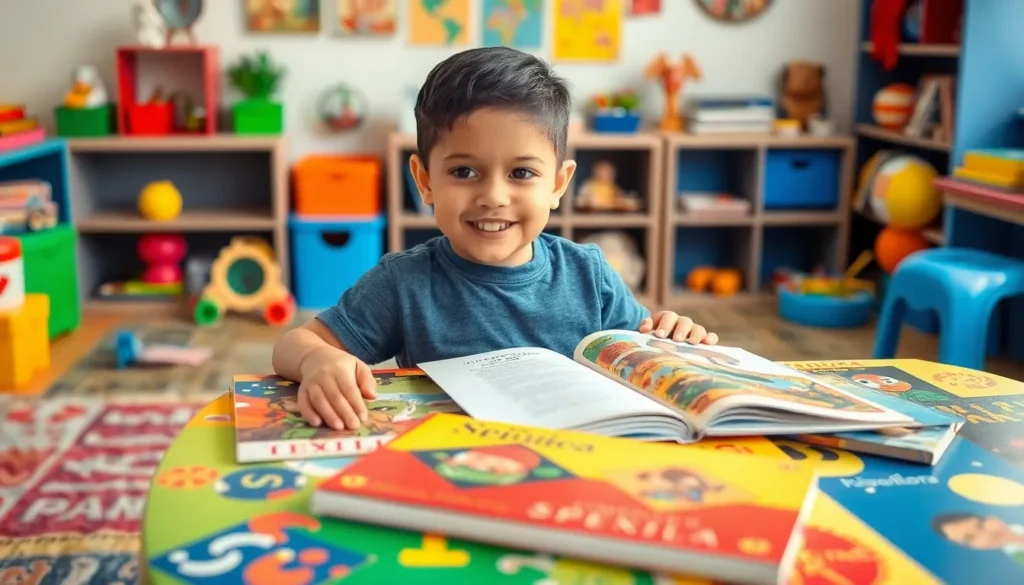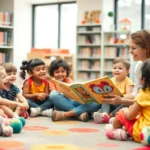Table of Contents
ToggleIn a world that’s more connected than ever, raising multilingual children isn’t just a trend; it’s a superpower. Imagine your little one effortlessly switching from English to Spanish while ordering tacos or charming their way through a French bakery. Sounds like a scene from a sitcom, right? But it’s totally achievable with the right approach.
Understanding Multilingualism
Multilingualism refers to the ability to communicate effectively in multiple languages. This capacity can exist in varying degrees, allowing individuals to express themselves fluently or functionally across different linguistic contexts.
Definition of Multilingualism
Multilingualism encompasses various forms of language proficiency. Some individuals navigate several languages with ease, while others might maintain conversational skills in multiple languages. The distinction between bilingualism and multilingualism lies in the number of languages spoken, as bilingualism involves two languages. Multilingual individuals often blend linguistic skills seamlessly, benefiting from exposure to diverse cultures.
Benefits of Raising Multilingual Children
Raising multilingual children provides numerous advantages. Cognitive benefits include enhanced problem-solving skills and improved memory. Social benefits arise through deeper connections with diverse cultures, fostering empathy and understanding. Economic advantages emerge from increased employability in a globalized job market. Moreover, multilingualism can delay the onset of cognitive decline in older age, offering long-term health benefits. Each of these factors contributes to the growing emphasis on multilingual education and its importance in today’s interconnected world.
Strategies for Raising Multilingual Children

Raising multilingual children requires effective strategies and consistent efforts. Implementing these techniques promotes a successful language-learning experience.
Creating a Language-rich Environment
Creating a language-rich environment enhances language acquisition. Surround children with books, music, and conversations in their target languages. Engage with interactive activities, such as storytelling, which fosters interest in diverse languages. Use visual aids, like labeled objects and multilingual labels, to support vocabulary development. Encourage playdates with other multilingual peers to facilitate social interactions in various languages.
Consistent Language Exposure
Consistent language exposure is crucial for multilingual development. Establish a routine that incorporates each language throughout the day. Allocate specific times for different languages, such as during meals or bedtime. Incorporate language-specific media such as cartoons and audiobooks to strengthen listening skills. Encourage conversations with family members in their native languages, enhancing fluency and confidence. Incorporate cultural practices, like cooking traditional meals, to connect language learning with real-life experiences.
Challenges in Multilingual Parenting
Raising multilingual children comes with distinct challenges that parents face along the journey. Navigating these complexities requires awareness and active involvement.
Common Misconceptions
Many individuals mistakenly believe that introducing multiple languages simultaneously confuses children. This perception overlooks the brain’s remarkable capacity for language acquisition. Parents may worry that children won’t master any language effectively. In reality, children often outperform monolingual peers in terms of cognitive flexibility and problem-solving skills. Some think that learning languages is only practical for later years. However, early exposure fosters a natural and effortless learning experience. Ignoring these common misconceptions can help parents better support their children’s linguistic development.
Language Mixing and Code-switching
Language mixing is a natural occurrence in multilingual children. Many children blend elements from different languages seamlessly. This behavior indicates their linguistic proficiency rather than confusion. Code-switching also happens when children switch between languages within conversations. Such transitions demonstrate an understanding of context and audience. Parents may find this behavior concerning, fearing that it hinders fluency. Embracing this as part of language development enhances a child’s confidence. Supporting children in their language exploration encourages effective communication across languages.
Supporting Language Development
Supporting language development is crucial in raising multilingual children. Active engagement in multiple languages at home fosters natural language acquisition and fluency.
Encouraging Language Use at Home
Creating opportunities for children to practice language at home proves effective. Designating specific times or activities for each language helps establish routine. Using bilingual books and songs introduces vocabulary in context. Parents can incorporate games that require language use, making learning enjoyable. Engaging in conversations in multiple languages provides practical experience. Additionally, encouraging storytelling in both languages enhances comprehension and creativity.
Engaging with Community Resources
Connecting with community resources enhances language exposure. Local libraries often host storytime sessions in multiple languages, perfect for fostering a love of reading. Cultural centers frequently offer classes or events celebrating different languages, allowing children to immerse themselves in linguistic communities. Joining playgroups featuring multilingual peers offers social interaction and language reinforcement. Online platforms provide access to educational resources and virtual language exchanges. Leveraging these community assets enriches children’s language experiences and builds confidence.
Raising multilingual children opens doors to a world of opportunities. It enriches their cognitive abilities and fosters meaningful connections with diverse cultures. By creating a supportive language-rich environment and incorporating engaging activities, parents can nurture their children’s language skills effectively.
Embracing the challenges and celebrating the milestones of multilingualism will empower children to thrive in an interconnected world. The journey of multilingual parenting is rewarding and transformative, equipping children with the tools they need for success in the global landscape. With dedication and creativity, parents can help their children become confident and capable communicators in multiple languages.





